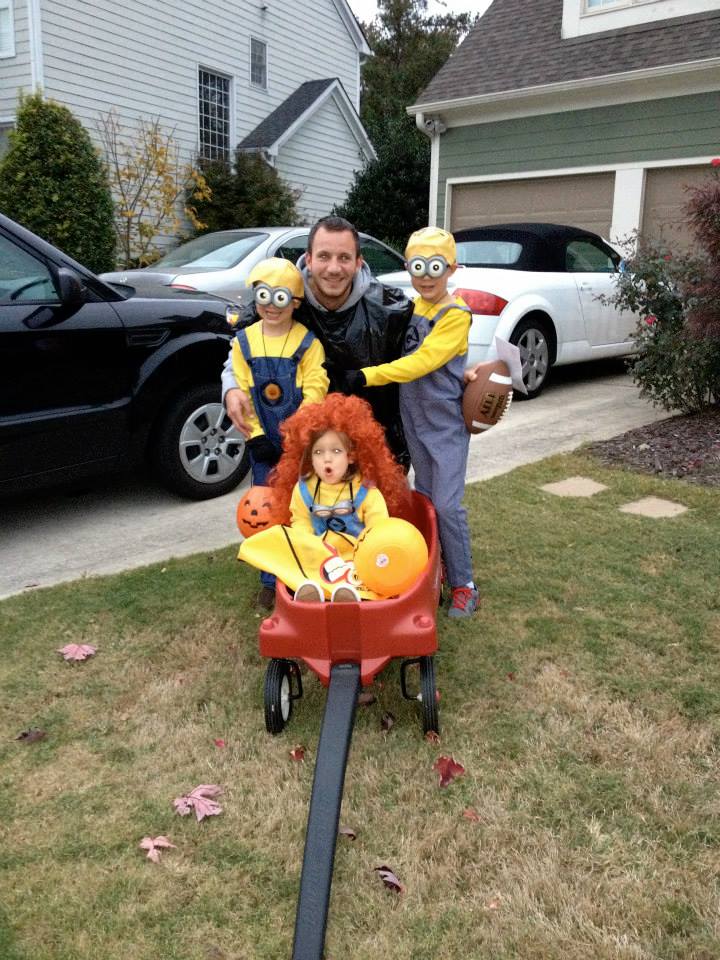With Halloween rapidly approaching, children and adults alike will dress up in costumes and masks and make the trek from door to door for sweets. This has long been one of my favorite times of year given the annual excursion and memories created while making the rounds with my nephews and niece.
The day after Halloween, all the ghosts, witches, zombies, super heroes, cartoon characters and the like go back to being themselves. This reminds me of Jim Carrey, who had a transformation of his own when he donned The Mask, in the 1994 movie.
We change ourselves and put on masks for a multitude of reasons. At Halloween time it is to acquire mass amounts of treats. In everyday life, whether a child, adolescent, or adult, it may be to connect or fit in, to win others over (i.e. boss, employee, customer, spouse, love interest, friend), to gain acceptance, or to achieve a preferred outcome. The deep seeded feelings behind these might be loneliness, fear of rejection, or the excitement of achieving the desired result. People often sit across from me flummoxed about this very struggle of being themselves. Any which way you cut it, what are we really telling ourselves when we wear a mask? In short, I have to be someone other than myself in order to be accepted. In other words, I am not enough the way that I am. Think this enough and it becomes easier and easier to lose track of who we truly are as well as our self worth. This happens because we form neural pathways within our brain that become stronger and stronger through repetition.
CLIP (1 min) Metaphoric illustration of nueral pathway developent
Whether this is you or someone you love, this doesn't have to be your reality. While it isn't as simple as turning off a light switch. You may have heard that the brain is plastic. No, the brain is not made by Tupperware. Neuroplasticity, or brain plasticity, refers to the brain's ability to change during our lifetime. The human brain has the wondrous ability to reorganize itself by forming new connections between brain cells. Just because you think a certain way doesn't necessarily mean you are locked into that for the rest of your life. Through time and effort we can rewire our thinking.
““Our minds have the incredible capacity to both alter the strength of connections among neurons, essentially rewiring them, and create entirely new pathways. (It makes a computer, which cannot create new hardware when its system crashes, seem fixed and helpless).” ”
To bring about change, you can start by tapping into your reflective response system (versus your reflexive, your fight or flight response). To do so, here are a few questions:
Am I genuinely myself to everyone that I interact with?
If "No", who do I misled about who I am?
What is my motivation for being someone other than my true self with them?
What is my fear of them seeing me for who I really am?
What about myself do I not want them to see?
How can I grow in acceptance of this aspect of myself?
If this is genuinely an undesirable character trait (i.e. dishonest, impatient, unkind, pessimistic), how can I work on my personal growth?
If you have a child, perhaps you can help them look at this and have a discussion related to peer pressure. Taking a deep hard look at ourselves is no easy task. It can feel like exploring in the dark. How you choose to respond is important. Whether with your child, family member, or friend, it is important to acknowledge and allow the self disclosure to flow. Responses like, "Well, you shouldn't feel that way", "You don't need to worry about that", and "You're fine just the way you are" serve to shut down the conversation. Alternatives like, "I hear you fears and concerns", "It is hard feeling alone and left out", and "I understand how you would want to feel accepted" allow compassion and empathy to flow.
Finding a motivational lever can be helpful. For example, close your eyes and visualize the freedom of being able to be yourself. Picture yourself surrounded by others who accept you as you are or the person you are growing into becoming. Listen to how you see yourself with those people. Imagine yourself in a state of inner peace able to say, "I am enough".
Friendly reminder, take precautions while out Trick or Treating. Be safe and have fun out there!
“The inner self is the true self. In order to realize our true self we must be willing to live without being dependent upon the opinion of others.”










